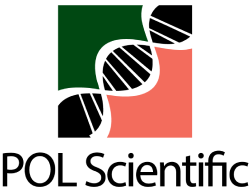External Cooperation and Policies
For an emerging international publisher like POL, proactive and well-targeted external cooperation is a core driver of leapfrog development. Partnerships not only accelerate reputation-building and expand resources but also enable deeper integration into the global academic network. The following outlines cooperation models with different entities:
I. Cooperation Models with Academic Institutions/Societies
1. Official Journal Partnerships
· Model: Enter into agreements with global or regional societies in the life sciences to jointly publish their official journals.
· Role of POL: Manage publication, production, platform operations, marketing, and distribution.
· Role of the Society: Provide academic credibility, appoint editors-in-chief and editorial board members, and promote the journal through its member network.
2. Collaborative Launch of New Journals
· Model: Work with societies or research institutes to plan and establish new journals, targeting emerging frontier fields.
· Role of POL: Contribute publishing expertise, financial investment, and global market channels.
· Role of the Institution: Contribute academic leadership, scientific vision, and community influence.
3. Conference Collaborations
· Model: Serve as a publishing partner or sponsor for the annual conferences of academic societies.
· Role of POL: Publish special conference issues and abstract collections, sponsor awards such as the “Best Student Paper Prize” (with winning papers prioritized for publication in POL journals), and host exhibition booths at conference venues.
II. Cooperation Models with Individual Experts
1. International Editorial Board
· Model: Invite distinguished scholars from different countries, career stages (from leading authorities to rising stars), and genders to serve on journal editorial boards.
· Role of POL: Provide clear responsibilities, maintain regular communication, and offer recognition and rewards (e.g., "Outstanding Editorial Board Member of the Year").
· Role of Experts: Shape the journal’s direction, solicit submissions, manage peer review, and promote the journal.
2. Early-Career Scholar Development Program
· Model: Create editorial board positions for early-career researchers or organize workshops on scientific writing and peer review for young scholars.
· Role of POL: Provide training, platforms, and career development opportunities.
· Role of Experts: Contribute fresh perspectives and grow into loyal future leaders in their fields.
3. Guest Editors and Special Issues
· Model: Invite experts to lead special issues or thematic collections on emerging topics.
· Role of POL: Provide project management and promotional support.
· Role of Experts: Define the scope, invite contributors, and oversee the peer-review process.
III. Cooperation Models with Universities and Research Institutions
1. Institutional Membership Program
· Model: Sign open access (OA) transformation agreements with university libraries or research offices. Authors from these institutions receive discounts or waivers on article processing charges (APCs) when publishing OA articles in POL journals.
· Role of POL: Offer flexible cooperation plans and provide detailed usage reports.
· Role of Institutions: Centralize payments and support open access publishing for their researchers.
2. Campus Representative Network
· Model: Recruit “POL Campus Ambassadors”—typically motivated senior PhD students or postdoctoral fellows—from leading universities.
· Role of POL: Provide training, promotional materials, and incentives.
· Role of Ambassadors: Promote POL journals on campus, organize small-scale seminars, and collect feedback.
3. Joint Academic Events
· Model: Partner with renowned university laboratories or departments to host focused, high-level symposiums.
· Role of POL: Provide funding, event logistics, and organizational support, and manage subsequent publications.
· Role of Institutions: Contribute academic content, invite speakers, and provide venues.
IV. Cooperation Models with Laboratories
1. Proactive Commissioning of Articles
· Model: Closely track the latest developments from leading laboratories (e.g., preprint servers, conference presentations). Reach out directly to principal investigators (PIs) and invite them to contribute Review or Perspective articles based on their forthcoming high-impact findings.
2. Data Sharing and Publication
· Model: Collaborate with laboratories that generate unique datasets (e.g., cryo-electron microscopy centers, genome sequencing platforms) to launch data journals or “data note” publications dedicated to disseminating highly reusable datasets.
· Academic Societies: Secure authoritative endorsements, rapidly build trust, and serve as official publishing partners to co-develop journals and conferences.
· Individual Experts: Establish an academic core, expand network reach, build international editorial boards, organize special issues, and cultivate the next generation of scholars.
· Universities/Research Institutions: Scale up manuscript acquisition, build a stable publishing ecosystem, sign institutional OA agreements, and develop campus ambassador networks.
· Laboratories: Capture frontier research outputs, generate high-impact content, proactively commission articles, and explore innovative models such as data publishing.
